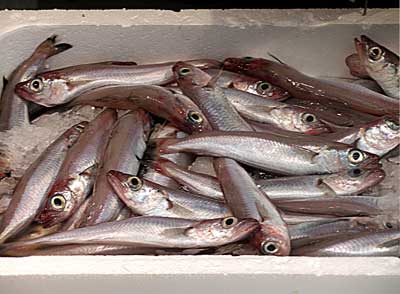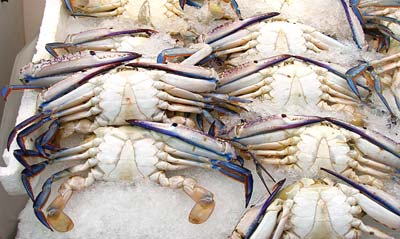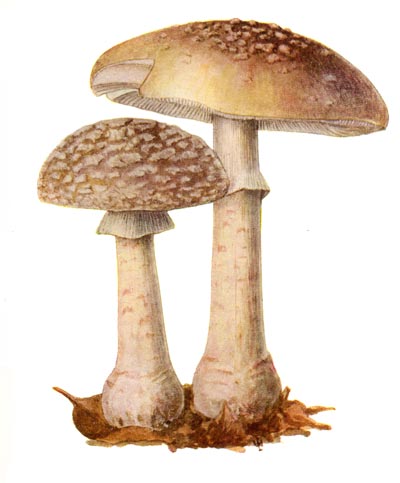
A drum of semihard blue cheese made with cow's milk. It has a close-textured white paste with blue veining and a natural, bandaged rind. It is a dairy cheese made with pasteurised milk and contains 48% fat. It is made with vegetable rennet so is suitable for vegetarians. It may be found weighing from 2 kg (4½ lb) to 8 kg (17 lb 10 oz). Affinage is from 9 to 12 weeks. This blue cheese was the predecessor of the present day Wensleydale and was made at Jervaulx Abbey in Yorkshire and has been recorded since the 12th Century. As with many British cheese, production was stopped during the Second World War but the cheese is now being developed again. It has a slightly bitter flavour. Winner of the British Cheese Awards Silver Medal in 1996 and 1997.

The blue whiting can develop a sour taste so it is less frequently eaten and is usually used for fish meal.

A variety of crab. A handsome crab found in bays and estuaries, preferring muddy or sandy bottoms, mainly from southern Queensland but found all round the northern coasts of Australia.
According to Ruth Reichl, Bluff oysters have flesh so firm you can actually bite into it (think of a very tender geoduck). Flat oysters, they have a the metallic tang of natives or Belons. Bluff oysters, which are most abundant in the Foveaux Strait of New Zealand, have a short season around March to April and are rarely exported.

The one problem with the blusher is that, whilst edible itself, it closely resembles other mushrooms that are poisonous, including the death cap. It must be cooked as it contains a toxin which is destroyed by heat, like kidney beans. The most identifiable thing about it is that this reddish brown mushroom with pinkish grey scales and a white stem colours pink to red at sites of damage or bruising. The gills and flesh are white, also becoming red or pink on bruising. It is most commonly found in beech woods in summer to late autumn (US: fall). Also look closely at the ring on the stem. This should have lots of fine grooves on its upper side, unlike another poisonous mushroom which it closely resembles, the panther cap. (If gathering mushrooms you must be absolutely certain what you have before you eat them as many are very poisonous.)
The blushing wood mushroom is a pinkish edible mushroom that grows in coniferous woods. The flavour is not very distinctive. (If gathering mushrooms you must be absolutely certain what you have before you eat them as many are very poisonous.)
A light rosé wine blended from red and white wines. It can also be a white wine made with black grapes, "blush" rather than red because of the shortness of the time for which the juice sits with the stems and grape skins.
Male pig or wild boar. There are increasing numbers of wild boar in Kent and Dorset, escapees from farms, and, of course, they roam large areas of France and other areas of Europe and Asia. They are not bled after slaughter, so the meat is very dark. One year we had booked a cottage near Arles for a holiday. The night before we were due to arrive in Provence we were burgled in our hotel room in Paris while we slept. Inevitably, the cottage was double booked and the day's delay meant we lost the house. We set off to alternative accommodation, armed with our T-shirts and swimming costumes. The only available house was in the Hautes-Alpes. We arrived late at night in the pitch blackness, to find the neighbouring town equally dark and snow not so very far away. Our hosts welcomed us with astonishingly flavoured boar pâté made with truffles which they had rooted out nearby and a memorable omelette. They showed us their guns and sent us off to our own house with a jar of jam (US: jelly) made from wild raspberries which they had picked on the hillside above. The following day we strolled up the mountain side and came across some wild boar. That's when I learned the word sanglier.